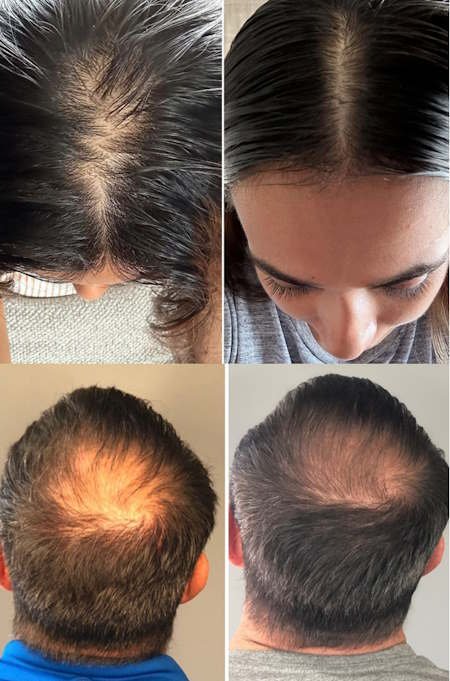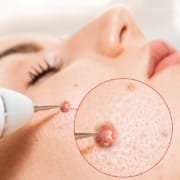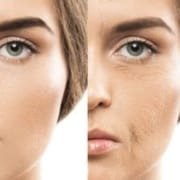Scalp Massage for Hair Growth, Benefits, Techniques and Results
If you’re dealing with thinning hair, rather than spending a fortune on various hair products, consider a simple, cost-effective solution backed by science: scalp massage. Scalp massage can increase hair thickness by stretching the cells of hair follicles, which stimulates them to produce thicker hair. Additionally, scalp massage may help dilate blood vessels beneath the skin, promoting hair growth.
What is Scalp Massage?
Similar to how a body massage soothes muscles, a scalp massage involves using gentle fingertip pressure, moving in circular motions across the scalp. Oils are optional but can enhance the nourishing effects. The outcome includes released tension, relaxed muscles, reduced stress, and stimulated hair regrowth. 
Benefits of a Scalp Massage
Achieving a healthy scalp and robust, thick hair involves proper nourishment and support. Scalp massages contribute to these goals in several ways:
- Improved Blood Circulation: Light pressure during the massage stimulates blood circulation in the head and neck areas, ensuring hair follicles receive essential nutrients for stronger strands.
- Conditioning the Scalp: The application of warm oil during the massage conditions the skin, preventing flakes, dandruff, and itchiness.
- Stress Reduction: Beyond promoting hair growth, scalp massages offer stress relief, indirectly benefiting hair health. Stress reduction is crucial, as excessive stress negatively impacts hair growth.
Scalp Massage Techniques for Hair Growth
Enhancing the effectiveness of a scalp massage involves incorporating specific techniques:
- Traditional Massage Technique: Gently use fingertips in circular motions, starting from the front and moving towards the back, taking just 5 minutes.
- Massage While Washing Hair: Incorporate massage into your routine by applying shampoo and conditioner with slow, circular motions during your shower.
- Use Massage Tools: Handheld scalp massagers and brushes can enhance the massage’s results, promoting gentle stimulation of hair follicles.
- Experiment with Essential Oils: Peppermint, lavender, and other essential oils can be mixed with warm water, applied to the scalp, and massaged for improved blood flow and stress reduction. Leave the oils in for at least 30 minutes before rinsing.
Choosing Essential Oils for Scalp Massage
Selecting the right essential oils is crucial for optimal results:
- Coconut Oil: Known for its antibacterial and antifungal properties, it requires warming before use.
- Sweet Almond Oil: Strengthens hair and relieves scalp tension, reducing blood pressure.
- Rosemary Essential Oil: Anti-inflammatory properties ensure healthy blood flow to hair follicles.
- Jojoba Oil: Dissolves sebum around follicles, promoting a healthy environment for hair regrowth.
- Avocado and Olive Oil: Rich in vitamins, they nourish hair and stimulate growth.
How Often Should You Massage Your Scalp?
For those not using essential oils, massaging the scalp with fingertips twice daily can yield optimal results. Essential oil users can benefit from a weekly massage session. Always be attentive to your scalp’s needs and incorporate massages during hair washing when tension builds up.
Does Scalp Massage Work?
Research indicates that scalp massages can be effective in treating various hair loss conditions. One study observed a 69% improvement in participants with androgenetic alopecia who incorporated regular scalp massages. The technique focuses on the hair follicle, stretching cells, increasing hair thickness, and improving blood flow to support follicles during growth.
A Relaxing Scalp Massage as a Preventative Measure
In addition to promoting new hair growth, scalp massages may act preventatively against further hair loss. Studies suggest that the more time spent massaging over an extended period, the better the results. While self-reported results may have limitations, the effectiveness of a massage on hair loss prevention shows promise.
Tips for Healthy Hair Growth
Scalp massaging is one component of a holistic approach to achieve thicker hair. Consider these additional tips:
- Improve Nutrition: Consult with your doctor to devise a plan incorporating essential nutrients for optimal hair health.
- Avoid Over-Styling: Harsh dyes, shampoos, and styling tools can damage hair. Minimize their use to prevent unnecessary stress and breakage.
- Medication: Explore medications like finasteride and minoxidil, consulting your doctor for potential side effects and benefits.
- Hair Transplant Options: For a permanent solution, consider hair transplant procedures, promising high success rates with minimal recovery time.
The Science Behind Scalp Massage
Scalp massages work by increasing blood flow to the hair follicles, which can deliver more oxygen and nutrients necessary for hair growth. This increased circulation can also help to remove waste products from the scalp that can hinder hair growth. In addition, the mechanical action of massaging the scalp can help to stretch the cells of hair follicles, which may stimulate them to produce thicker hair.
Studies have shown that consistent scalp massages can increase hair thickness. For example, a study published in the journal “Eplasty” found that participants who performed a four-minute scalp massage daily for 24 weeks experienced an increase in hair thickness.
Additional Benefits of Scalp Massage
Beyond stimulating hair growth, scalp massages have several other benefits:
- Improving Scalp Health: Regular massages can help to exfoliate the scalp, removing dead skin cells and promoting a healthier scalp environment.
- Reducing Headaches: The relaxing effects of a scalp massage can help to alleviate tension headaches and migraines.
- Promoting Relaxation: The act of massaging the scalp can trigger the release of endorphins, which are natural mood lifters.
Choosing the Right Tools for Scalp Massage
While using your fingertips is effective, there are several tools available that can enhance the experience of a scalp massage:
- Scalp Massagers: These are designed to mimic the motion of fingertips and can provide a more consistent massage.
- Scalp Massage Brushes with Soft Bristles: These can help to gently stimulate the scalp without causing irritation.
- Electric Scalp Massagers: These devices can provide a deeper massage and are especially useful for those who may find it difficult to perform a manual massage.
Combining Scalp Massage with Other Hair Growth Treatments
For those seeking to maximize their hair growth efforts, combining scalp massages with other treatments can be beneficial:
- Minoxidil: This topical treatment can be applied to the scalp after a massage to enhance absorption.
- Dietary Supplements: Supplements that include biotin, zinc, and other hair-healthy vitamins and minerals can support hair growth from within.
- Laser Therapy: Low-level laser therapy devices can be used in conjunction with scalp massages to further stimulate hair follicles.
When to Seek Professional Advice
While scalp massage offers a natural and cost-effective approach to healthier hair, it’s crucial to recognize that rapid or significant hair loss may signal an underlying medical condition. In such cases, seeking evaluation from a healthcare professional is imperative to rule out any potential health issues contributing to hair loss.
In Conclusion
While ongoing research continues to unveil the full potential of scalp massages, current evidence is encouraging. This simple, cost-effective, and easily accessible technique may not cure hair loss, but it can stimulate hair growth and improve overall scalp health. With just a few minutes and your fingertips, or aided by massage tools and essential oils, you can enjoy the therapeutic benefits of a scalp massage. For a comprehensive approach and personalized guidance, consult your doctor to monitor progress effectively.
Incorporating scalp massage into your routine can be a relaxing and beneficial practice. Whether you’re dealing with thinning hair or simply looking to improve the health of your scalp, this technique offers a natural and accessible solution. With regular practice, scalp massage can become a key part of your hair care regimen, supporting healthier, thicker hair and a more relaxed state of mind.










